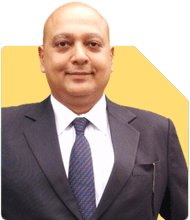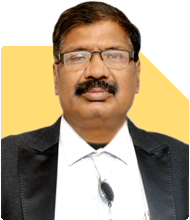Sir,
Im 50 years old and just started thinking about my retirement life and start deciding to invest in NPS of 20000 as regular basis and opened PPF account contributing 6000 monthly and starts SIP through online app of Groww of 1000 on quant small cap fund , nippon multi cap find , nippon india index fund of 1000 each on monthly Basis
And 9 lakhs amount invested in MIS
I need your valuable suggestion and your opinion for to regulate and review in a proper way for to set a better retirement at 60 as my income is 35000 p. m
I have no loans and no financial commitment as if now
I need your valuable guidance in this regard
Ans: Investing for retirement is a crucial step in ensuring a financially secure future. Starting at 50, you still have a decade to build a robust retirement corpus. Your current investment strategy is commendable, but a few adjustments and regular reviews can enhance your financial security. This guide provides a detailed analysis and suggestions to help you refine your investment strategy for a comfortable retirement at 60.
Assessment of Current Investments
National Pension System (NPS)
Contributing Rs. 20,000 regularly to the NPS is a smart move. NPS offers a balanced investment mix with exposure to equities, corporate bonds, and government securities. Its tax benefits under Section 80C and additional Rs. 50,000 under Section 80CCD(1B) make it attractive. However, the withdrawal rules and taxation on annuity purchase need consideration. Reviewing the asset allocation periodically is essential.
Public Provident Fund (PPF)
A monthly contribution of Rs. 6,000 to PPF is a sound choice. PPF offers tax-free returns and is a safe, long-term investment. The 15-year lock-in period can be a drawback, but partial withdrawals are allowed after the 7th year. The current interest rate of around 7-8% is beneficial, but it is subject to government revisions.
Systematic Investment Plan (SIP)
Investing Rs. 1,000 each in multiple mutual funds through SIPs is wise. However, diversifying too much can dilute returns. Evaluating the performance and expense ratios of these funds is crucial. Actively managed funds often outperform index funds due to the fund manager's expertise in stock selection.
Monthly Income Scheme (MIS)
Investing Rs. 9 lakhs in MIS provides a regular income, which is useful for liquidity needs. However, the interest rates are lower compared to equity-based investments. Reviewing this investment periodically and considering alternatives for better returns is advisable.
Detailed Analysis and Suggestions
National Pension System (NPS)
Asset Allocation: NPS allows you to choose the allocation between equities, corporate bonds, and government securities. Opt for an aggressive allocation towards equities, especially since you have a decade until retirement. This can boost your returns significantly.
Periodic Review: Review your NPS allocation annually. Adjust the equity exposure based on market conditions and your risk appetite.
Tax Benefits: Utilize the additional Rs. 50,000 tax benefit under Section 80CCD(1B) if not already doing so. This can reduce your taxable income further.
Public Provident Fund (PPF)
Lock-in Period: The 15-year lock-in period can be restrictive. However, consider it as a safety net for your retirement corpus. After the initial 15 years, you can extend it in blocks of 5 years.
Interest Rates: Keep an eye on the government announcements regarding PPF interest rates. They are reviewed quarterly, and any reduction can impact your returns.
Partial Withdrawals: After 7 years, you can make partial withdrawals for emergencies. This adds a layer of liquidity to your investment.
Systematic Investment Plan (SIP)
Fund Selection: The Quant Small Cap Fund and Nippon Multi Cap Fund are good choices. However, actively managed funds have the potential to outperform index funds. Focus on funds with a strong track record and lower expense ratios.
Direct vs. Regular Plans: Investing through regular plans via a Certified Financial Planner (CFP) can be beneficial. CFPs provide valuable advice and periodic reviews. Direct plans might save on expense ratios but lack professional guidance.
Portfolio Diversification: Avoid over-diversification. Concentrate on a few high-performing funds. This strategy can enhance returns and simplify tracking your investments.
Monthly Income Scheme (MIS)
Interest Rates: MIS offers stable but lower interest rates compared to equity investments. Consider the reinvestment risk if interest rates decline.
Alternatives: Explore alternatives like Senior Citizens’ Savings Scheme (SCSS) after turning 60. SCSS offers higher interest rates and tax benefits under Section 80C.
Additional Investment Strategies
Equity Exposure
Increasing your equity exposure can significantly boost your retirement corpus. Consider investing in large-cap and blue-chip mutual funds. These funds offer stability and growth potential.
Debt Investments
Balance your portfolio with debt investments to manage risk. Apart from PPF, consider corporate bonds or debt mutual funds. These provide better returns than traditional fixed deposits.
Emergency Fund
Maintain an emergency fund equivalent to 6-12 months of expenses. This ensures liquidity during unexpected events. Keep this fund in liquid assets like savings accounts or liquid mutual funds.
Health Insurance
Health expenses can deplete your retirement savings. Ensure you have adequate health insurance coverage. Review your policy periodically and increase coverage if necessary.
Tax Planning
Utilize Tax Deductions
Maximize tax deductions under Section 80C, 80D, and 80CCD. This includes NPS, PPF, health insurance premiums, and home loan principal repayments.
Tax-efficient Investments
Invest in tax-efficient instruments like ELSS (Equity Linked Savings Scheme) mutual funds. They offer tax benefits under Section 80C and potential for higher returns.
Periodic Review and Adjustments
Annual Review
Conduct an annual review of your investment portfolio. Assess the performance, risk, and alignment with your retirement goals.
Adjust Allocations
Adjust your asset allocation based on market conditions and life changes. Increase debt allocation as you approach retirement to safeguard your corpus.
Rebalance Portfolio
Rebalance your portfolio periodically to maintain the desired asset allocation. This ensures you stay on track with your retirement goals.
Building a Robust Retirement Corpus
Target Corpus Calculation
Calculate the target retirement corpus based on your expected expenses post-retirement. Consider inflation and healthcare costs.
Systematic Increase in Investments
Increase your investment amounts annually in line with income growth. This strategy helps in accumulating a substantial retirement corpus.
Avoid Early Withdrawals
Avoid withdrawing from your retirement savings prematurely. Early withdrawals can derail your retirement planning.
Investment Education
Stay Informed
Stay informed about financial markets and investment options. This helps in making informed decisions and adjusting strategies as needed.
Consult Professionals
Seek advice from a Certified Financial Planner (CFP) regularly. A CFP provides tailored advice based on your financial situation and goals.
Conclusion
You have taken commendable steps towards securing your retirement. Regular contributions to NPS, PPF, and SIPs, along with MIS investments, form a strong foundation. However, a few adjustments and periodic reviews can enhance your strategy. Increasing equity exposure, balancing with debt investments, and effective tax planning are key. Regular reviews and consultations with a CFP will ensure you stay on track.
Best Regards,
K. Ramalingam, MBA, CFP,
Chief Financial Planner,
www.holisticinvestment.in
.jpg)





















